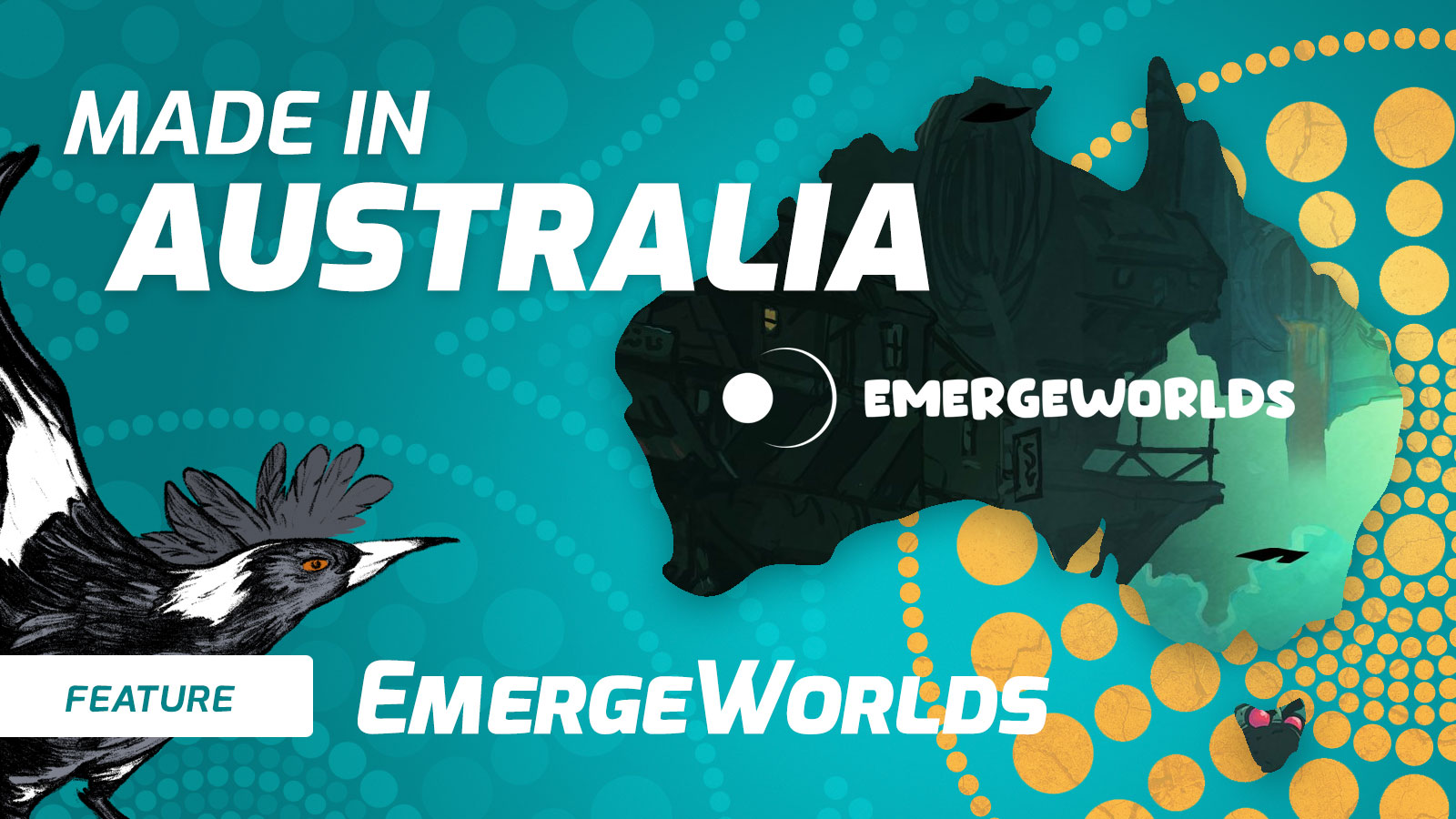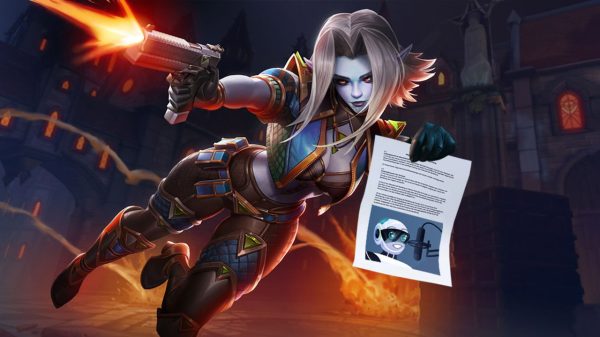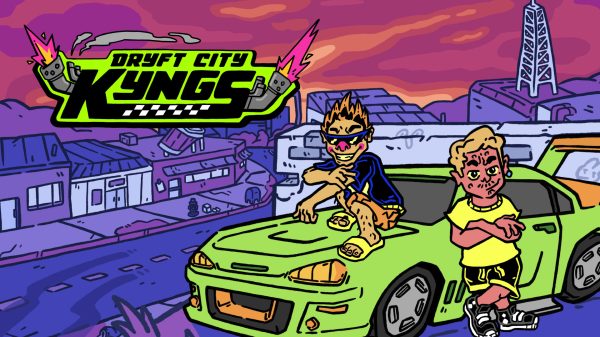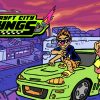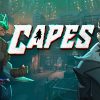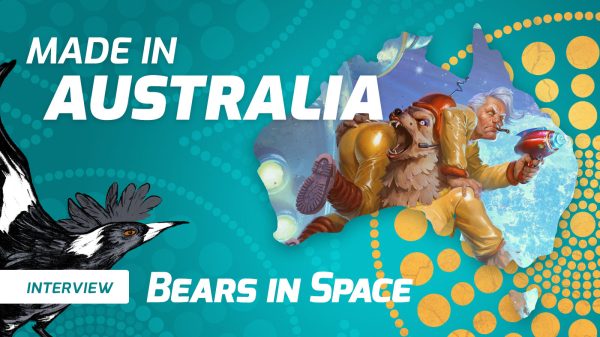It’s not very often that people get to work with someone they’ve been friends with since childhood, but Brisbane studio EmergeWorlds is built on a lifetime of friendship, with co-founders Tim Molony and Ben Ward’s being buddies for more than 35 years. They met at St. Matthews Primary School in Canberra, sharing interests in all things creative, mostly movies at the time. Even when their friendship was tested with Ward moving to Brisbane, the pair remained in touch, and the fact that this was in the pre-Internet era makes it even more impressive.
Their journey into game development would differ slightly, with neither studying game development. However, the pair have qualifications that have helped them on their journey. Coming from a background in film and TV, Molony, now the company’s Executive Producer, studied Media Production and Creative Writing. Ward, a concept artist and Dros’ creative director, studied architecture but has spent most of his career in games.
Excitingly, 35 years since they first met, the duo has just released their first video game for PC – Dros, a third-person action-adventure-puzzler where you play as two characters who must work together (literally) to unravel the mysteries of the tower.
Although Dros is its first traditional video game release, EmergeWorlds has been around for six years. Initially starting out developing VR projects, Molony revealed that VR was the catalyst for the two joining creative forces and forming EmergeWorlds, with programmer Deon Chique joining the team not long after.
“We had a virtual reality headset at my old work and we were pretty inspired by what virtual reality could do, and Ben and I caught up and we decided to start a company,” says Molony.
The studio’s first VR game was Dance Collider, a title that asked players to compete against the best dancers in the world, as well as other players in online leaderboards. Since then, Molony says he’s been playing around with Unity ever since, doing music editing and script writing.
In between Dance Collider and Dros, the team did some project work, partnering with St. John Ambulance to prototype a first-aid training scenario that utilised VR before it had any hand-tracking capability. The project came about because of Ward’s friendship with someone at St. John Ambulance, with Ward stating that they were happy for the prototype to be creative as well as educational.
Molony describes it as a really interesting project and says that the studio was offered to do just over 30 scenarios for St. John, but the project was impacted by COVID-19 and the team moved on to other ventures. Despite it not panning out, Molony believes that VR is the future of first-aid training, but acknowledges that the hardware needs to catch up for it to be most effective.

Tim Molony

Ben Ward
Another endeavour the company worked on was called Spaces, a program that allowed users to design their own space. Within it, users could play with different design choices, such as the wall colours or whether pieces of furniture fit in particular areas. The planned evolution of the app would have seen users with the ability to order items from within Spaces.
“I guess that’s the more corporate side that we were on, working on some of those projects,” says Molony.
Nowadays, the studio has moved away from VR projects, instead focusing on developing traditional video games, a move that came naturally.
The team has been working on Dros for over three years, with the idea being fleshed out after the release of the Dance Collider.
Molony reveals that Dros was originally planned as a VR title, however while the appeal of tackling a new gaming market excited the team, the VR hardware wasn’t at the level required for the project, so Dros pivoted to being a PC game.
“As the game developed it was clear that it was going to suit traditional more than VR, and that’s just something we embraced,” adds Ward.
“Even from a practical point of view, we knew we wanted to make the game and get it to a bunch of different platforms, and there’s more platform opportunity out there with a flatscreen game than a VR title.”
If you’re like me and wondered why EmergeWorlds decided to call the game Dros when the English definition of the word (albeit spelt with an extra s) is rather negative, the reason why is actually quite cool.
“In the backstory there’s this idea of alchemy,” answers Ward.
“I was looking through alchemy lore, like reading history and books and I saw that when you perform a chemical transmutation, whatever’s left at the bottom – this gunky leftover – is called dros. So that stuck. That become our enemies and Little Dros as well.”

St. John Training in VR
If you play Dros you’ll probably see a little bit of that in the dioramas, like a fascination with architecture. It’s almost like thinking back to things like the M.C. Escher staircases
Before forming EmergeWorlds, Molony was an assistant editor and editor at production houses that worked on various projects such as In Cold Light before working as a producer at advertising agencies and production houses, working with brands such as Heineken, Corona and MTV.
One of the biggest learnings he’s brought to EmergeWorlds is resource management.
“Producing, you have to deal with money – you have to pay people. You have to make sure that the project doesn’t run too far over budget, because where is that money coming from?”
But Molony’s talents are not just on the admin side of things, with Ward praising his audio contribution to the studio’s projects. Ward, who has been in games for about 20 years, started as a concept artist at Brisbane’s Krome Studios before moving to Japan to work for a couple of different development studios over seven years.
“I worked at none of the famous companies,” Ward laughs.
He was able to work on games for the Nintendo DS, Xbox, as well as making games for pachinko machines, or what Australians would call pokie machines.
The experience that Ward got from his stint in Japan has been instrumental in helping his career grow, with exposure to certain things that he wouldn’t have had in the West.
After returning to Australia, Ward worked at Gold Coast’s Binary Mill, primarily on their mobile projects, in what he says was the height of mobile gaming.
Ward says that his architecture degree has come in handy as a concept artist.
“If you play Dros you’ll probably see a little bit of that in the dioramas, like a fascination with architecture. It’s almost like thinking back to things like the M.C. Escher staircases.”

Dros concept art
Not having any academic qualifications in games isn’t a bad thing says Ward, with the concept artist believing that the best learning is done on the job, a sentiment that many indie devs share.
As an artist, Ward is curious to see how the usage of AI art is utilised in games over time.
“You do get a little bit of an ego twinge, it’s like “Hang on, am I being threatened here?” says the Dros creative director.
“If you’re using tools and those tools are gradually getting better and allowing you to create what you would define as works of art, then that’s a good thing. I would hate to see it diminishing the artistic spirit of people, I think that would be my concern.
“I can’t see it stopping though, that’s the problem. It kind of leads me to consider, beyond feeling bad as an artist that I am being threatened, what does it mean to be creative? What does it mean to see something having been produced in front of you creatively?
“Sometimes the beauty or the interest in something also comes from the limitations upon it – the imperfections and limitations upon the project sometimes are the things that give rise to what’s special.”
EmergeWorlds is a full-time commitment for its three permanent members, and while they did share an office in Brisbane at one stage, the studio now operates remotely as a result of the COVID-19 pandemic.
Ward explains that the team was recommended to vacate and go home.
“It was a bit of a juncture point – the St. John stuff was finishing up and we were head down working on Dros, and we just gradually got used to remote,” says the Dros creative director.
Both Ward and Molony admit there are elements of working in an office that they do miss.
“I think we’ve got pretty good at it – we’re so used to it so we can read each other’s mind a little. But speaking as an artist, I think there’s something to be said to be over someone’s shoulder or with them and chatting about it,” says Ward.
The team does catch up every morning on Discord and debrief the previous day’s work, and talk throughout the day and share screens constantly, so while they may not be in the same room, they are mostly on the same page.
Molony says that there is a benefit to being in the same space.
“What happens with games is that you get so busy with your part that the catch-ups, they’re so important, but you just want to get your bit done.”

Dance Collider
However, Ward admits that pretty much every time that Dros has “jumped forward in design decisions” it has been when the team has caught up in person.
“Where the three of us are right together on the sofa just playing, I could track those times as the times that we made the big leaps.”
Despite the appeal of working from home, both Ward and Molony admit that it can be hard to switch off at times, especially with your workstation never too far away.
“It’s always on your mind,” says Ward.
“Speaking for myself, but you’ve got to compartmentalise your brain a bit otherwise you’ll go crazy.”
There were times earlier in development when the team would impose a deadline to get the project back on track.
“You do find yourself going a little bit off in different directions, and then you put that deadline in and it forces you to have a goal,” explains Molony.
As you’d expect, both Molony and Ward grew up around and enjoying video games. For Ward, whose first was an Amstrad adventure game, what he loved about games in the 80s and 90s as a young kid was the ability to be transported to and immersed inside a world.
“More than film and TV for me at the time, I was amazed how you could do that with a game – to be able to take someone and fully immerse them in this world, and walk around and chat to the characters. It was this one dimension more than film.”
Series like Monkey Island and the Super Nintendo generation all had an impact on Ward, fostering a love for stories and characters, which cultivated a desire to someday create his own worlds and adventures.
“You could finish the game and think, I played a cool game but I also went through a bunch of awesome characters that were funny and a really cool real world that immersed me. That was big for me.”
Surprisingly, Ward also credits film and animation as another inspiration for his decision to take a creative career path. In fact, the St. Matthews alumni recall making a short film titled Predator 3 (Predator 2 had just been released), with Ward’s uncle’s camera.
“Even at that time, Tim was acting as the producer organising things and I was on the camera,” laughs Ward.

Working remotely with Dros
Like most kids growing up in the 80s and 90s, Nintendo was a big part of Molony’s childhood, with Goldeneye often getting a good flogging whenever he and his friends were hanging out. Golden Axe and other Nintendo titles such as Metroid and Mario Kart are games that he remembers fondly. But it’s a fighting game that gets the pair excited the most.
Molony and Ward reminisce about playing Street Fight II on the arcade machine down at the local shops.
“We’d come home from school and we’d have our coins ready. There was always this one player down there that was so good – he used to kick our butts, he used to use Dhalsim and had this technique where you couldn’t beat him,” laughs Molony.
Games were very different growing up in the late 80s and 90s, and it’s something that Ward fondly remembers.
“It was such a cool time for games, maybe not sophisticated games, but in getting back to that thing about cool experiences and cool characters, they’re my memories.”
While the core team is three members, the studio has brought in contractors to work on Dros, helping with things such as animations, and art, character and sound design. The team has never exceeded more than five at any one time, being very cautious about how and when it spends its resources.
The studio has received funding from Screen Queensland and Screen Australia to help it keep going, but the rest of the money has come from savings. However, despite the funding grants, being a small studio means that they have to ensure that every dollar is being used effectively.
“Sales start to decline over time for your last project, so you have to balance that with managing the studio in a way where you’re very careful about what you can allocate money-wise to other parts of the project,” explains Molony.
“Also, when is the right time for a person to come into a project? Like early on we weren’t ready for someone to come on to help with level design or animation. So just making sure that when you do bring someone into the project that that part is ready for them to work on as you can’t afford to waste a lot of time and money.”

St. John was happy for EmergeWorlds to get creative with the VR training program
Sometimes the beauty or the interest in something also comes from the limitations upon it
To help with the final push in Dros’ development, EmergeWorlds ran a Kickstarter in April 2023 with a goal of $14,000 and ended up raising over $21,000. Molony says they didn’t want an elaborate campaign and simply chose a target that would help them release Dros.
Molony says that when doing a Kickstarter you need to figure out the minimum amount of funding required, as well as plan for the rewards and how much time to make and fulfill them.
“We were only offering digital rewards because we knew we could get those to people. I’ve seen campaigns that run into a few issues with the physical rewards.”
The team says that using Kickstarter again isn’t out of the question, as they’ve gained useful knowledge about how it works, but there is still a lot more to learn about how to run a successful campaign. The team encourages reaching out to those with experience if you are thinking about running your own campaign.
Although EmergeWorlds decided to self-publish Dros, the studio co-founders confirm that several publishers have made approaches about taking over publishing duties. However, they were confident in handling it themselves, although they do concede that if they had found a publisher that was the right fit, then perhaps they could have teamed up.
With Dros now released, the EmergeWorlds co-founders agree that it is an IP they’d love to turn into a series.
“When you spend so much time in a world that you’ve created, there are so many ideas and things you can do with that particular world,” says Ward.
“The world of Dros is big, there’s a lot of lore that we’ve established, so it would be awesome to continue it,” adds Molony.
However, before work on any potential sequel begins, the team is focused on bringing Dros to as many platforms as possible, as well as releasing some DLC for the game, for which they already have some content and ideas at the ready.

More Dros concept art
EmergeWorlds may have only been around for a few years, but it’s starting to make its presence known. With a burgeoning Queensland game scene continuing to release quality, unique experiences, there’s a big future ahead for both EmergeWorlds and game development in the Sunshine State.
Despite a childhood playing survival horrors, point and clicks and beat ’em ups, these days Zach tries to convince people that Homefront: The Revolution is a good game while pining for a sequel to The Order: 1886 and a live-action Treasure Planet film. Carlton, Burnley FC & SJ Sharks fan. Get around him on Twitter @tightinthejorts




